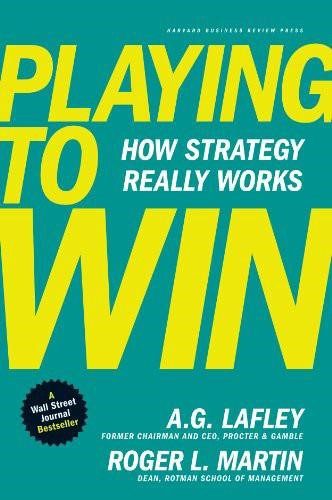
Global companies pride themselves on hiring smart people to come up with great ideas. But the outcome often falls short of the promise. The problem isn’t people, AG Lafley, CEO of P&G, figured out, but the way they deliberate.
“When we are too critical, it restricts creative thinking, and we neglect less obvious but brilliant ideas.”
— A.G. Lafley, CEO P&G
Learning how to get the best thinking from a team is the paramount skill of a leader. That was the reason AG Lafley, former CEO of Procter & Gamble (P&G), wanted to find out why superior teams made inferior decisions. What he discovered was simple, but the more surprising thing is that the solution dated back to 400 years ago.
Lafley understood from his earlier experience as a product manager for Ivory Snow that team decisions suffer from three biases: too critical, too political, and also, too conventional. The average team gets overwhelmed by a need to reject or accept ideas quickly. Most strategy meetings do not provide a ‘meditative’ space to think. It is why Jeff Bezos always has 30 minutes devoted to reading at the start of his meetings. The second problem is that a power player dominates the discussion. And the third problem is that an idea is discarded because it makes the team uncomfortable.
Lafley realized that if he could fix team decision-making, it would enable P&G to be much more competitive, and in a particular case, he could solve a problem with a dying brand called Oil of Olay.
Oil for Old Ladies
P&G missed the mark on a burgeoning growth category called “skincare,” the hottest segment of the beauty segment. The brand team faced a stark choice, take a chance on Oil of Olay, a down-market brand that was around since a Unilever scientist discovered it in South Africa in 1952. By this time, the trade snidely referred to it as “oil for old ladies.’ Or they could spend billions to buy a line from Clinique or Neutrogena that might capture the attention of younger women.
Lafley stepped in to set the ground rules for the idea generation process.
Most companies have turned strategy making into a sterile ritual. Reams of materials, barely read, often filed away, pronounced “asleep on arrival.” Lafley skipped over the usual stops on the strategy train, places like McKinsey or BCG and even P&G’s strategic planning department, and opted for an oldie but goodie dating back to the Renaissance. His reasoning was not sentimental. Lafley was looking for a way to “allow transparency to guide decisions.” What he discovered was the scientific method, a problem-solving device used by inventors from Leonardo to Steve Jobs. Only P&G had to reimagine the formula to come up with a solution to their skincare problem.
So what is the scientific method?
Sir Francis Bacon, a Lord Chancellor of England or what we call an Attorney General, born in 1561, was the first to discover the scientific method. For Bacon, 1620 was a time when orthodoxy conflicted with old beliefs. Aristotle claimed over 1,000 years earlier that the Sun revolved around the earth, a fact the telescope accurately disproved. But people stubbornly clung to the ancient myth.
Bacon believed that humans could misinterpret anything given a chance. So he came up with a novel idea during a time of witches, wizards, and pagan rituals. He wanted to subject the truth to evidence testing. (By the way, we still practice ancient pagan rituals today when we celebrate Sunday as the Sabbath instead of Saturday. In the Fourth Century, Roman king Constantine shifted the biblical day of worship to fall on a pagan holiday, “sun” day).
Bacon insisted that truth requires facts, not hunches. He set out the principles that apply not just to marketing, by the way, but any endeavor where we are searching for accurate decisions in our life and work. The scientific method uses hypotheses to construct possibilities and then invites testing to assure reliable results. The five steps, according to Bacon, form the acronym, PHTAC, or as I like to remember it: People Hide their Assets Carefully.
1. State The Problem
2. Form A Hypothesis
3. Test The Hypothesis
4. Analyze The Results
5. Draw A Conclusion
 P&G updated Bacon’s five steps to express their particular challenges, and renamed them but kept the Renaissance formula intact: Problems became strategic possibilities. Hypotheses became finding the critical market requirements or what they call “conditions.” Testing changed too. P&G wanted the conditions tested, not a review of the possibilities. The analysis became evaluation, reflecting the need of third party experts. Finally, conclusions became strategic probabilities. Whether you choose to use P&G’s or Sir Francis Bacon’s terms, the important thing is to understand the steps and how they can apply to strategy.
P&G updated Bacon’s five steps to express their particular challenges, and renamed them but kept the Renaissance formula intact: Problems became strategic possibilities. Hypotheses became finding the critical market requirements or what they call “conditions.” Testing changed too. P&G wanted the conditions tested, not a review of the possibilities. The analysis became evaluation, reflecting the need of third party experts. Finally, conclusions became strategic probabilities. Whether you choose to use P&G’s or Sir Francis Bacon’s terms, the important thing is to understand the steps and how they can apply to strategy.
By the way, Bacon’s life wasn’t all scientific. He lost his Lord Chancellor’s role for taking bribes, for which he served time in His Majesties dungeon. It seems inventing the scientific method is not the same as living it. His failure is particularly relevant as the scientific method would have exposed our greatest corporate disasters from Enron to the financial crisis. You could say it prevents our illusions from turning into delusions.
 The branding team at Oil of Olay took Bacon’s method and adapted it, with outstanding results. The team examined a range of “possibilities” uncritically, then subjected them to several vital conditions and tested results by third party experts and outsiders. The final decision was to reframe Oil of Olay into a “masstige” brand sold through mass distributors. The strategy process worked, and today, Olay is a multi-billion dollar brand that caters to upscale younger women through mass distribution channels.
The branding team at Oil of Olay took Bacon’s method and adapted it, with outstanding results. The team examined a range of “possibilities” uncritically, then subjected them to several vital conditions and tested results by third party experts and outsiders. The final decision was to reframe Oil of Olay into a “masstige” brand sold through mass distributors. The strategy process worked, and today, Olay is a multi-billion dollar brand that caters to upscale younger women through mass distribution channels.
Lafley wrote about his experience in his book “Playing To Win.” He makes it clear that the real problem with teams and decisions is we are too critical of novel ideas. It is often those crazy, out of your mind ideas that lead to brilliant solutions.
Read more: P&G CEO Taylor Embraces Sustainability Thinking in C-Suite and Beyond

Chief Executive Group exists to improve the performance of U.S. CEOs, senior executives and public-company directors, helping you grow your companies, build your communities and strengthen society. Learn more at chiefexecutivegroup.com.
0

1:00 - 5:00 pm
Over 70% of Executives Surveyed Agree: Many Strategic Planning Efforts Lack Systematic Approach Tips for Enhancing Your Strategic Planning Process
Executives expressed frustration with their current strategic planning process. Issues include:
Steve Rutan and Denise Harrison have put together an afternoon workshop that will provide the tools you need to address these concerns. They have worked with hundreds of executives to develop a systematic approach that will enable your team to make better decisions during strategic planning. Steve and Denise will walk you through exercises for prioritizing your lists and steps that will reset and reinvigorate your process. This will be a hands-on workshop that will enable you to think about your business as you use the tools that are being presented. If you are ready for a Strategic Planning tune-up, select this workshop in your registration form. The additional fee of $695 will be added to your total.

2:00 - 5:00 pm
Female leaders face the same issues all leaders do, but they often face additional challenges too. In this peer session, we will facilitate a discussion of best practices and how to overcome common barriers to help women leaders be more effective within and outside their organizations.
Limited space available.

10:30 - 5:00 pm
General’s Retreat at Hermitage Golf Course
Sponsored by UBS
General’s Retreat, built in 1986 with architect Gary Roger Baird, has been voted the “Best Golf Course in Nashville” and is a “must play” when visiting the Nashville, Tennessee area. With the beautiful setting along the Cumberland River, golfers of all capabilities will thoroughly enjoy the golf, scenery and hospitality.
The golf outing fee includes transportation to and from the hotel, greens/cart fees, use of practice facilities, and boxed lunch. The bus will leave the hotel at 10:30 am for a noon shotgun start and return to the hotel after the cocktail reception following the completion of the round.